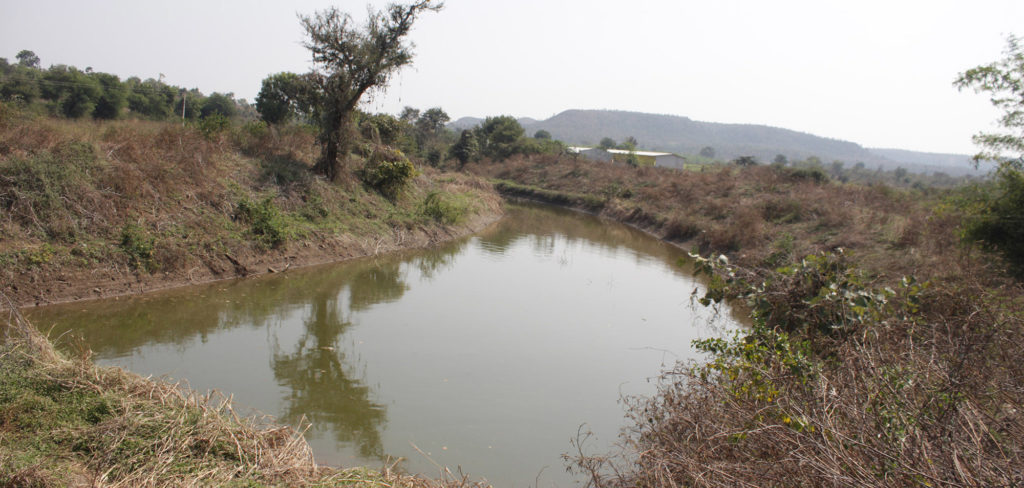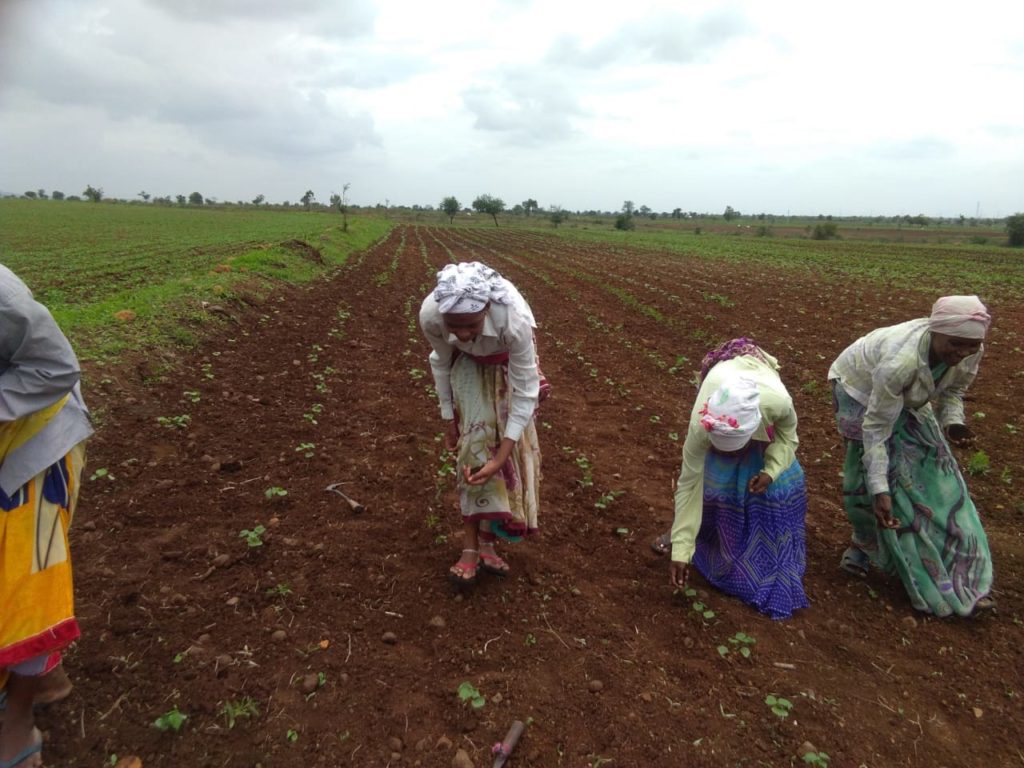Annual rainfall that cannot support robust cotton cultivation, and fast-declining ground water levels are real risks cotton farmers must manage for their crops and their livelihoods. Vijay Narayan Rau, a cotton farmer in Kalamb block of Yavatmal district in Maharashtra says, “There was a time when ponds were perennial in nature and had abundant water to meet the irrigation needs of farmers within the village. With our growing dependence on tube wells, ground water is fast depleting even as we contend with a water scarce reality.” Similar stories are echoed in cotton cultivating clusters like Kukshi Block in Dhar district of Madhya Pradesh. Sakiri Bai, a woman farmer from Mogra village in Dhar district says that there has been a growing trend of groundwater-based irrigation in the villages that is resulting in over-extraction leading to a deficit in water availability for agriculture and domestic uses.
The Institute for Sustainable Communities (ISC) in collaboration with the USAID and Gap Inc. led Women + Water Alliance, is working with cotton growing communities in India to map water resources, identify water related issues, and develop practices that advance conservation and sustainability—all with the goal of improving the health and well-being of women and communities touched by the apparel industry.
Cotton Cultivation – Risks and Threats
Yavatmal in Maharashtra and Dhar in Madhya Pradesh are major cotton growing districts, with more than a third of their regions cultivating the crop. An analysis of the changing rainfall pattern for the last decade in Dhar and Yavatmal, indicates that 7 out of the last 10 years have seen less than normal rainfall, thereby putting farmers at risk and leading to greater extraction of groundwater.1
The ball formation stage in cotton farming requires irrigation as a critical input. Changing rainfall during this stage can negatively impact crop output especially in Yavatmal and Dhar where majority of the farmers practice rainfed irrigation. With the increasing adoption of groundwater-based irrigation systems coupled with uncertainties in rainfall, it is important that small and marginal farmers are educated on water risks, current use and availability scenario planning and are encouraged to adopt demand and supply measures for effective water management.

Effecting Sustainable Change – A Collaborative Effort
In order to engage with farmers on enabling the uptake of sustainable water use, ISC and its implementing partners undertook a water resource mapping exercise in all the project villages to ascertain the status of water resources and identify major water related problems in select regions. This was followed by a water budgeting exercise which enabled communities to map the annual water supply and demand for their villages. Villagers and farmers were involved in the mapping and budgeting exercise which helped estimate the annual water balance for each of the 30 project villages.
The water budgeting exercise yielded the following results:
- 95-98% of the total water used in the agriculture sector is for crop irrigation
- 27 of the 30 project villages had an annual water deficit indicating that annual water demand in these villages (for agriculture, domestic and livestock) was more than the annual supply from rainfall (made available from surface and groundwater sources). This deficit is met by groundwater sources, leading to its over extraction and thereby adversely affecting water availability.
- Annual groundwater decline in these regions ranges from 1 to 3 meters risking the future sustainability of these water sources
The scenario called for measures on water demand management. This was done through the sharing of Good Operating Practices (GOPs). Cotton farmers in the areas of outreach were trained on GOPs that help lower the use of water, fertilizers and pesticides in farming. These demand management measures helped to lower both input use and the cost of cultivation. Results from the first cropping season since adoption of GOPs indicate a reduced water footprint of 20%. This is due to the adoption of practices that reduce the number of irrigation cycles and the volume of water applied in each irrigation.
With regard to supply side enhancement, ISC and the implementing partners used the results of the geo-hydrological mapping to identify sites for source strengthening, in collaboration with the Gram Panchayat (Village Council) through schemes to repair dams and farm ponds. In addition to these measures, water literacy camps were also conducted to increase awareness among communities on water conservation and management.

Conversations for Action, and Action for Impact
The experiences and results of the water budgeting exercise have served as the starting point of effective conversation for action. With factual inputs and quantitative estimates, communities came to the realization that if there was one area for reducing water use, it was the water use for agriculture. Contending with the realities of a huge annual water deficit highlighted the urgent need to augment supplies and change behaviour towards how water should be used and managed. ISC and the project team’s efforts continue to help build awareness and demonstrate change in the upcoming cotton season. In response to climate change, building resilient farming communities by minimizing risks and securing water resources, is the most sustainable plan of action.
Ravikant Kumar, Program Assistant, Institute for Sustainable Communities
This post does not represent the views or positions of the U.S. Agency for International Development, the U.S. Government, or Gap Inc.
1 Rainfall Data from Indian Meteorological Department
